 klaus-michael schneider
klaus-michael schneider
Keywords: colombia |
Links: FOTW homepage | search | disclaimer and copyright | write us | mirrors

Last modified: 2021-08-26 by  klaus-michael schneider
klaus-michael schneider
Keywords: colombia |
Links: FOTW homepage |
search |
disclaimer and copyright |
write us |
mirrors
Editorial Remark: It must be noted that all the opinions are of the authors and not of FOTW. Our site is non-political and concentrates only on vexillological issues.
See also:
 image by Esteban Rivera, 17 September 2018
image by Esteban Rivera, 17 September 2018
cropped image taken from
the original communiqué, seen here:
http://pagina10.com/web/wp-content/uploads/2018/01/panfleto-intimidante.jpg,
source:
http://pagina10.com/web/guerrillas-unidas-del-pacifico-realizan-amenazas-en-el-charco-narino/)
The (Nuevas) Guerrillas Unidas del Pacífico (English: (New) Pacific (Rim)
United Guerrillas) is an armed group in Colombia whose presence is mainly
located in the Department of Nariño, as seen in this map:
http://www.planv.com.ec/sites/default/files/mapa-5_0.jpg (source:
http://www.planv.com.ec/investigacion/investigacion/6-mapas-entender-lo-que-pasa-la-frontera-norte-ecuador).
It is a dissident armed group that was once part of
FARC. This group emerged ca. 2017 and it is
said to be composed mainly of former members of the "Columna Móvil 'Daniel
Aldana'", of the Frente 29 (English: Mobile Column 'Daniel Aldana', of the 29th
Front).
Sources:
https://www.semana.com/nacion/multimedia/lo-que-piensan-las-farc-sobre-milicias-disidentes-en-tumaco/517298,
http://www.farc-ep.co/desbrozando-ideas/esperamos-sus-hechos-presidente.html
https://www.minuto30.com/,
https://colombia2020.elespectador.com/tags/columna-movil-daniel-aldana,
https://www.eltiempo.com/justicia/,
https://www.eltiempo.com/justicia/conflicto-y-narcotrafico/abatidos-disidentes-de-farc-265808,
https://www.eltiempo.com/justicia/conflicto-y-narcotrafico/ultimos-golpes-contra-las-disidencias-de-farc-266824,
https://www.youtube.com/watch?v=p4yOgJUuK5U,
https://www.semana.com/nacion/articulo/guacho-y-david-la-debacle-de-los-dos-mayores-narcos-del-pacifico/583387
and
https://es.wikipedia.org/wiki/Estructura_militar_de_las_FARC
They
way in which this type of splinter groups arrange their colors is based on their
armbands (to identify themselves as members of an armed organization). A digital
image of the armband is seen here:
http://s3.amazonaws.com/elcomun/carpeta_ckfinder/files/andres/GUP.jpg
(source:
https://semanarural.com)
Logo of the organization
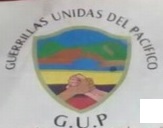 image by Esteban Rivera, 17 September 2018
image by Esteban Rivera, 17 September 2018
cropped image taken from the original communiqué, seen here: http://www.derechos.org/nizkor/colombia/img/TumacoGUP1.jpg, source: http://www.derechos.org/nizkor/colombia/doc/tumaco3.html)
Flag (variant) with inscription below
 image by Esteban Rivera, 17 September 2018
image by Esteban Rivera, 17 September 2018
cropped image taken from the original communiqué, seen here: http://www.derechos.org/nizkor/colombia/img/TumacoGUP1.jpg, source: http://www.derechos.org/nizkor/colombia/doc/tumaco3.html)
Here's photographic evidence of the existence of a flag for this group:
https://i1.wp.com/www.acore.org.co (source:
http://www.acore.org.co/noticias/narino-sitiado-las-disidencias-david-guacho/).
In the image, which is a horizontal flag, with two equally divided horizontal
stripes (top being red and bottom being green) one can see that it is the flag
of one of its factions. It reads "GUERRILLAS UNIDAS/DEL PACÍFICO" (English:
Pacific/United Guerrillas) (on top) and "COLUMNA MÓVIL/ DON YE" (English: Mobile
Column "Mr. Y" (in reference to one Commander, named Yeison Segura Mina (hence
the nickname "Mr. Y" for the initial of his name) (on bottom).
Sources:
https://lasillavacia.com/historia/las-farc-mataron-don-y-58754
and
http://pacifista.co/quien-era-alias-don-ye-un-guerrillero-disidente-o-un-paramilitar-disfrazado/
Esteban Rivera, 17 September 2018
 image by Zoltan Horvath, 24 November 2013
image by Zoltan Horvath, 24 November 2013
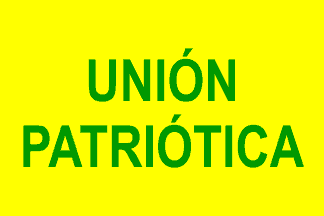 image by Zoltan Horvath, 24 November 2013
image by Zoltan Horvath, 24 November 2013
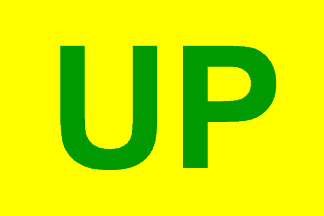 image by Zoltan Horvath, 24 November 2013
image by Zoltan Horvath, 24 November 2013
 image by Jaume Ollé, 19 November 2013
image by Jaume Ollé, 19 November 2013
Unión Patriótica (UP- Unión Patriótica, or Patriotic Union
in English), was a political movement set up under the 1984 peace
talks between the Colombian government and the Farc guerrilla. The party was
established in 1985 and it was the Farc's official political
movement, with cadres from both the Farc and the
Colombian Communist Party.
Some UP members even reached seats in Congress, as well as
important posts on the State and Local political level. However,
due to the extermination campaign by newly created paramilitary
forces as well as some official government action against this
party, it was diminished and it later faded away.
It officially ceased to exist under the new electoral code in
2006, but its members left or went underground much before that.
For more information on this party please refer to
wikipedia.
E.R., 3 September 2007
The UP has again gained its political status again due to a controversial
ruling by the Consejo de Estado on July 2103, enabling its members to run for
political posts.
The previously reported flag is incorrect, as the color combination to this
party is green and yellow, to symbolize a "third way" in Colombia, because when
this party was created, emerged as an offshoot of the
FARC
and they stood for a third way to end the political domination of bipartisan Conservatism
and they stood for a third way to
end the political domination of bipartisan
Conservatism and
Liberalism in the country during the XXth
century, as seen in the following pictures in recent rallies, showing the
actual
flag (Wikipedia file) which is a
yellow horizontal flag, with the letters UP in green inside a book, resembling
the coat of arm of the
FARC
regarding the book. Additional
UP flag is the same yellow background flag with the name of the party Unión
(top) and Patriótica (bottom) in capital green letters.
Pictures of the flags can be seen here:
-
http://lasillavacia.com/sites/default/files/interactive_pictures_1/union_patriotica-8.jpg
-
http://lasillavacia.com/sites/default/files/interactive_pictures_1/union_patriotica-2.jpg
-
http://lasillavacia.com/sites/default/files/interactive_pictures_1/union_patriotica-22.jpg
-
http://lasillavacia.com/sites/default/files/interactive_pictures_1/union_patriotica-26.jpg
Source:
http://lasillavacia.com/historia/las-paradojas-de-una-rosa-llamada-46105
Esteban Rivera, 19 November 2013
In Flag Report 64 were published some yellow-green flags of UP. One of them
is depicted above.
Jaume Ollé, 19 November 2013
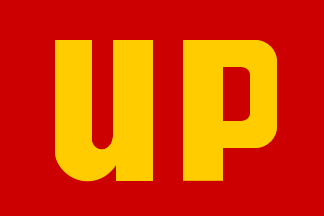 image by Eugene Ipavec (based on original by Jaume
Ollé), 3 September 2007
image by Eugene Ipavec (based on original by Jaume
Ollé), 3 September 2007
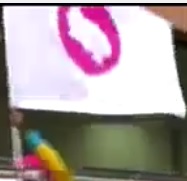 image located by Esteban Rivera, 9 August 2017
image located by Esteban Rivera, 9 August 2017
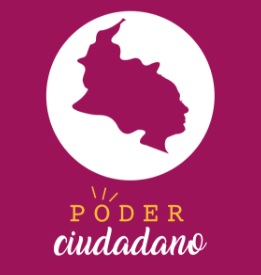 image located by Esteban Rivera, 9 August 2017
image located by Esteban Rivera, 9 August 2017
In the upcoming 2018 Presidential elections, several candidates are running
through signatures and/or alliances.
Such is the case of Piedad Córdoba,
a former Senator, who today launched her bid on behalf of the movement "Poder
Ciudadano". According to their official Facebook page (https://www.facebook.com/pg/PoderCiudadanos)
it was launched on February 9, 2013 and it was a movement inside the
Liberal Party.
This movement dates back as far as October 2005, when former Senator Cordoba was stripped (for the first time) of her seat in Congress (the second time was back in 2010). She then began promoting a left-wing approach inside the Liberal party, to prevent this party in supporting the reelection for President of (then incumbent President) Álvaro Uribe (who would eventually win and be reelected by the same movement he was elected in the first place) and had to run (again) as a independent candidate (with multiple parties endorsing his campaign) under the political movement called "Primero Colombia" (English: Colombia First ) (official website: http://primerocolombia.com/ , dead link, accessible through here: http://pensamientocolombia.org/) (sources: https://es.wikipedia.org/wiki/Poder_Ciudadano_Siglo_XXI, https://en.wikipedia.org/wiki/Colombia_First and http://www.crwflags.com/fotw/flags/co%7D.html#over).
The movement in the beginning was called "Poder Ciudadano Siglo XXI" (Citizen
Power 21st Century) (source:
https://es.wikipedia.org/wiki/Poder_Ciudadano_Siglo_XXI).
The flag is a pink
horizontal flag with the logo (in inverted colors) which is a map of Colombia
merged as an extension of her head forming the shape of a turban, a garment she
usually wears, as seen here in this picture published today:
https://pbs.twimg.com/media/DGuD_xFXgAASzyf.jpg (source:
https://twitter.com/piedadcordoba/status/894954329538531329, from her
official Twitter account @piedadcordoba (https://twitter.com/piedadcordoba).
The flags are seen all throughout this video:
https://twitter.com/PoderCiudadanos/status/894959928594620416 (source: @PoderCiudadanos,
https://twitter.com/PoderCiudadanos)
official Twitter account).
Its previous logo is seen here:
http://www.afrocubaweb.com/images/poder-ciudadano.jpg and its first logo is
seen here:
https://www.facebook.com/PoderCiudadanos
For additional
information go to Poder Ciudadano (official website):
http://www.poderciudadano.com.co/
Esteban Rivera, 9 August 2017
Original EPL Flag
New EPL Flag
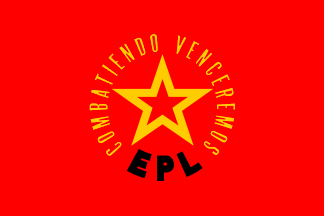 image by Eugene Ipavec, 29 July 2007
image by Eugene Ipavec, 29 July 2007
Esperanza, Paz y Libertad (Old Flag)
Esperanza, Paz y Libertad (New Logo)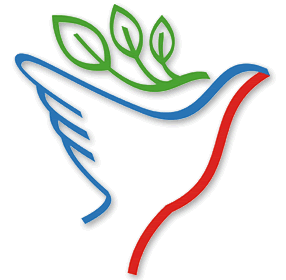 image by E.R., 23 March 2005
image by E.R., 23 March 2005
From www.tkb.org:
Mother tongue Name: Ejército Popular de Liberación (EPL). Base
of Operation: Colombia.
Founding Philosophy: The Popular Liberation Army grew out of the
Colombian Communist movement of the 1960s. In 1967, the
Marxist-Leninist Communist Party (ML-CP) broke off from the
larger communist political party, the Colombian Communist Party.
Dissatisfied with the political chaos of 1960's Colombia, the
ML-CP augmented its political organization with an armed wing in
1967. The new group soon embarked on terrorist activities under
the name People's Liberation Army. Both the ML-CP and EPL
advocated the Maoist ideology of sparking a national socialist
revolution by beginning in the countryside. Efforts to
indoctrinate the peasantry largely failed and the EPL never
reached the size of larger Colombian terrorist insurgencies such
as the FARC and ELN. In an effort to expand their support base,
the EPL abandoned strict Maoism in 1980. The group continued,
however, to work toward the goal of overthrowing the
democratically elected Colombian government and replacing it with
a communist state. Furthermore, the EPL continued to pursue these
insurrectionist goals through terrorist activities.
Current Goals: The EPL was one of the principal groups that
pushed for a peace accord with the Colombian government in the
early 1980s. With the signing of the peace accord in 1984, the
EPL attempted to join mainstream Colombian politics. Their
efforts were blocked, however, by the newly formed right-wing
paramilitary groups, such as the ACCU. In an effort to derail the
efforts to grant the politicization of the EPL, the right-wing
paramilitary groups attacked political representatives of the
EPL. The peace accord soon unraveled as other leftist groups, the
paramilitaries, and the Colombian Army continued their attacks on
one another.
Following the failure of the peace accord, the EPL attempted to
rejoin the violent fray involving the guerillas and Colombian
security forces, but this attempt proved futile. The EPL
essentially disbanded in 1991, when it signed a truce with the
Colombian government, although a breakaway faction operating
under the same name refused to accept the truce. This breakaway
faction continues to operate today, despite the arrest of its
co-founder and principal leader, Francisco Caraballo, in 1994.
I recommend you read the article on wikipedia
to understand the flags.
E.R., 23 March 2005
EPL had lost political protagonism over the years and it is
basically only active in the North Eastern region of the
Department of Antioquia known as
Urabá.
More information on Hope, Peace, and Liberty (Esperanza Paz y
Libertad) at wikipedia.
E.R., 12 August and 3 September 2007
 image located by Esteban Rivera, 21 October 2015
image located by Esteban Rivera, 21 October 2015
On October 2, 2015 a variant of the group
EPL was shown on local tv news
network Caracol.
Image cropped image from tv news.
Esteban Rivera, 21 October 2015
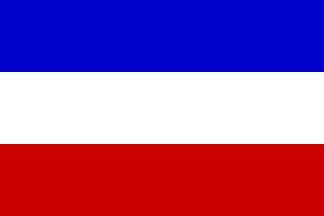 image by Eugene Ipavec, 17 July 2007
image by Eugene Ipavec, 17 July 2007
Horizontal blue-white-red. Similar colors to
M19 Guerilla Movement flag. Source is
Smith (1975) [smi75a], pp.
340-341 ("Symbols in politics"). Smith says that these
are real flags and not only party emblems, which may differ in
colours when used as emblem or in a flag.
Ivan Sache, 6 August 1999
ANAPO (Alianza Nacional Popular, People's National Alliance)
was founded by Lt. General Gustavo Rojas Pinilla in 1961). The
ANAPO lasted more than three decades, gaining importance on the
State and Local level as well, but it ceased to exist in 1998.
Many of its members are now part of the
PDI
(Polo Democrático Independiente).
Flag appears at Registraduría's
official website.
E.R., 17 July 2007